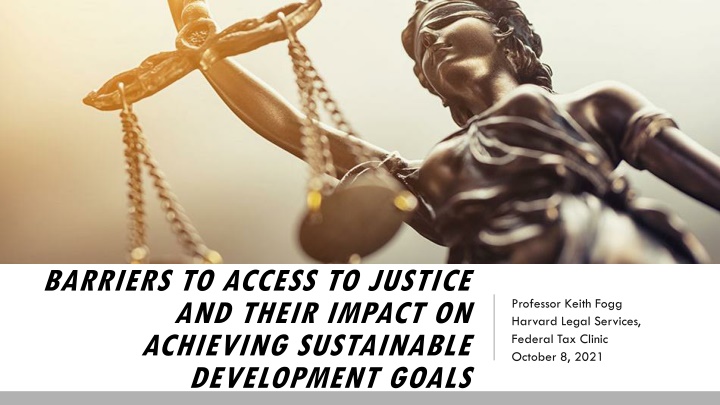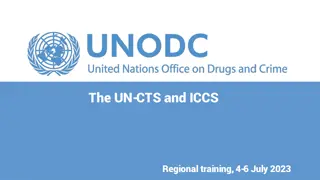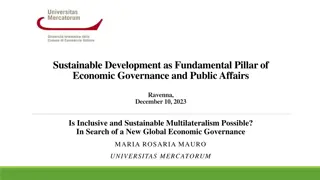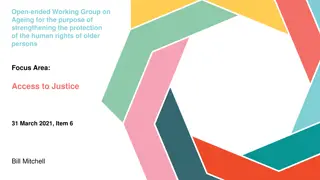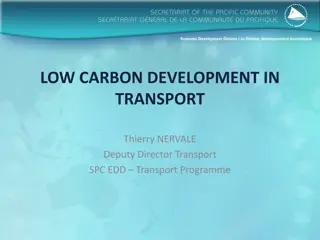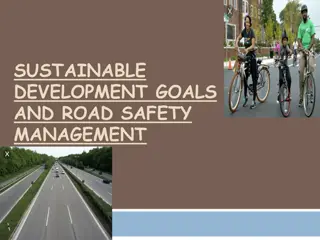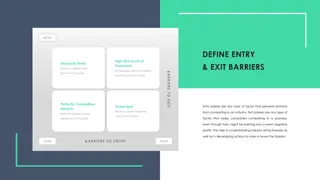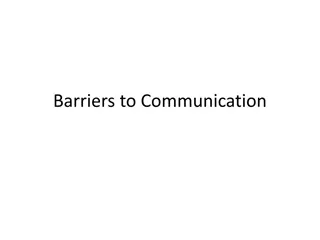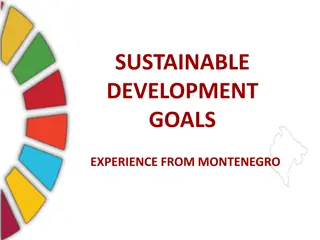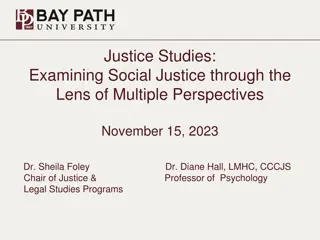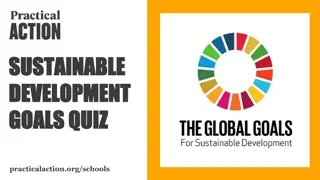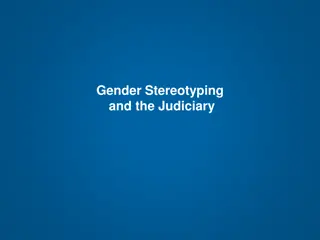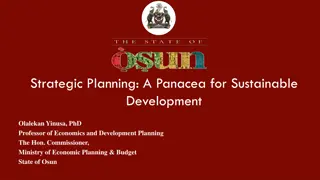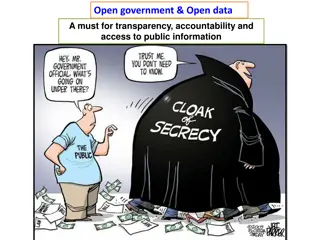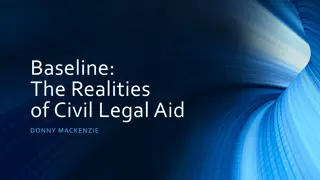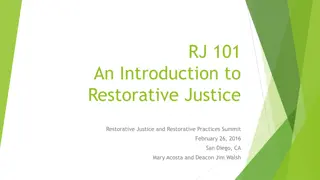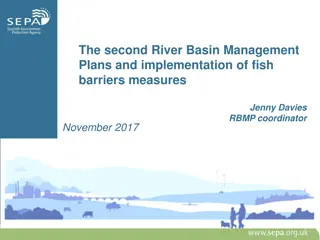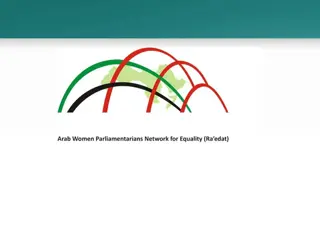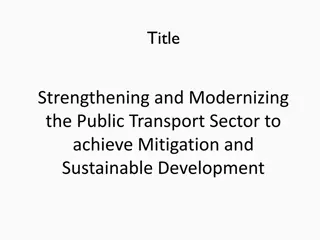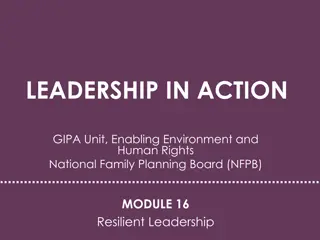Barriers to Access to Justice and Achieving Sustainable Development Goals
This content discusses various barriers to accessing justice and their impact on achieving sustainable development goals, focusing on actions taken by the Tax Clinic at Harvard, statutory barriers, challenges with math errors, time periods as jurisdictional barriers, and administrative barriers hindering justice access.
Download Presentation

Please find below an Image/Link to download the presentation.
The content on the website is provided AS IS for your information and personal use only. It may not be sold, licensed, or shared on other websites without obtaining consent from the author.If you encounter any issues during the download, it is possible that the publisher has removed the file from their server.
You are allowed to download the files provided on this website for personal or commercial use, subject to the condition that they are used lawfully. All files are the property of their respective owners.
The content on the website is provided AS IS for your information and personal use only. It may not be sold, licensed, or shared on other websites without obtaining consent from the author.
E N D
Presentation Transcript
BARRIERS TO ACCESS TO JUSTICE AND THEIR IMPACT ON ACHIEVING SUSTAINABLE DEVELOPMENT GOALS Professor Keith Fogg Harvard Legal Services, Federal Tax Clinic October 8, 2021
ACTIONS OF TAX CLINIC AT HARVARD Represent low income taxpayers in community to understand issues facing this population Seek out cases and comments of broad impact on community Directly represent taxpayers in Tax Court or in Appellate Courts on issues of significance to low income taxpayers File amicus briefs in support of taxpayers raising issues of importance to low income taxpayers File comments on regulations, forms, rule changes and any proposed government actions impacting low income taxpayers
STATUTORY BARRIERS Full payment rule in order to access court Difficulty of many low income taxpayers to appreciate and respond to deficiency notice Passage of many provisions bypassing deficiency process Denial of meaningful opportunity to obtain redress from judiciary
MATH ERROR Simple process turned complicated Now covers far more than simple math mistakes Allows IRS to assess summarily Coupled with IRS notices that fail to provide taxpayers with adequate information necessary to make a decision
TIME PERIODS AS JURISDICTIONAL BARRIERS Inflexible period for seeking judicial relief Refusal to recognize equitable reasons for delay Need for process that allows taxpayers opportunity for judicial relief after statutory time period when reason for delay meets necessary criteria
ADMINISTRATIVE BARRIERS Notices which mask opportunities for appeal Regulations which fail to take into account taxpayer rights and burdens imposed on low income taxpayers Failure to answer phone leaving taxpayers without opportunity to seek redress Failure to provide offices where taxpayers can walk in and speak face to face with IRS
SOLUTIONS Remove statutory barriers to judicial relief that regularly bar low income taxpayers from court Engage low income taxpayers and their representatives in rulemaking and form writing Adequately staff phone lines and walk in offices Recognize that needs of population using IRS for benefits deliver differs from population encountering IRS for tax payment
